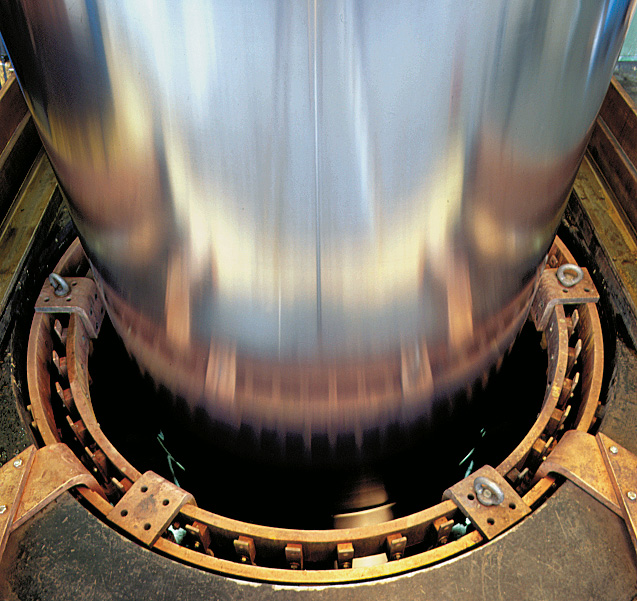Principle
Hard chrome plating is a galvanic, i.e. electrochemical, process.
The electrolyte (consisting of water, chrome anhydride and sulphuric acid) is maintained at a constant temperature of approx. 54 °C in an acidproof-lined tub. Corresponding catalyst salts may be added to the electrolyte, depending on field of application. This allows the gloss, hardness and deposition rate etc. to be influenced.

Direct current is used to deposit the chrome from the electrolyte. The vapours produced at the surface of the bath are extracted and cleaned in chrome separators. The cleaned air is discharged into the surrounding air and the recyclate from the washing process is fed back to the baths. The temperature of the electrolyte which is cooled by the water circuit increases as the bath load increases. The energy thus obtained is utilised by means of heat exchangers and mixed with the fresh air.